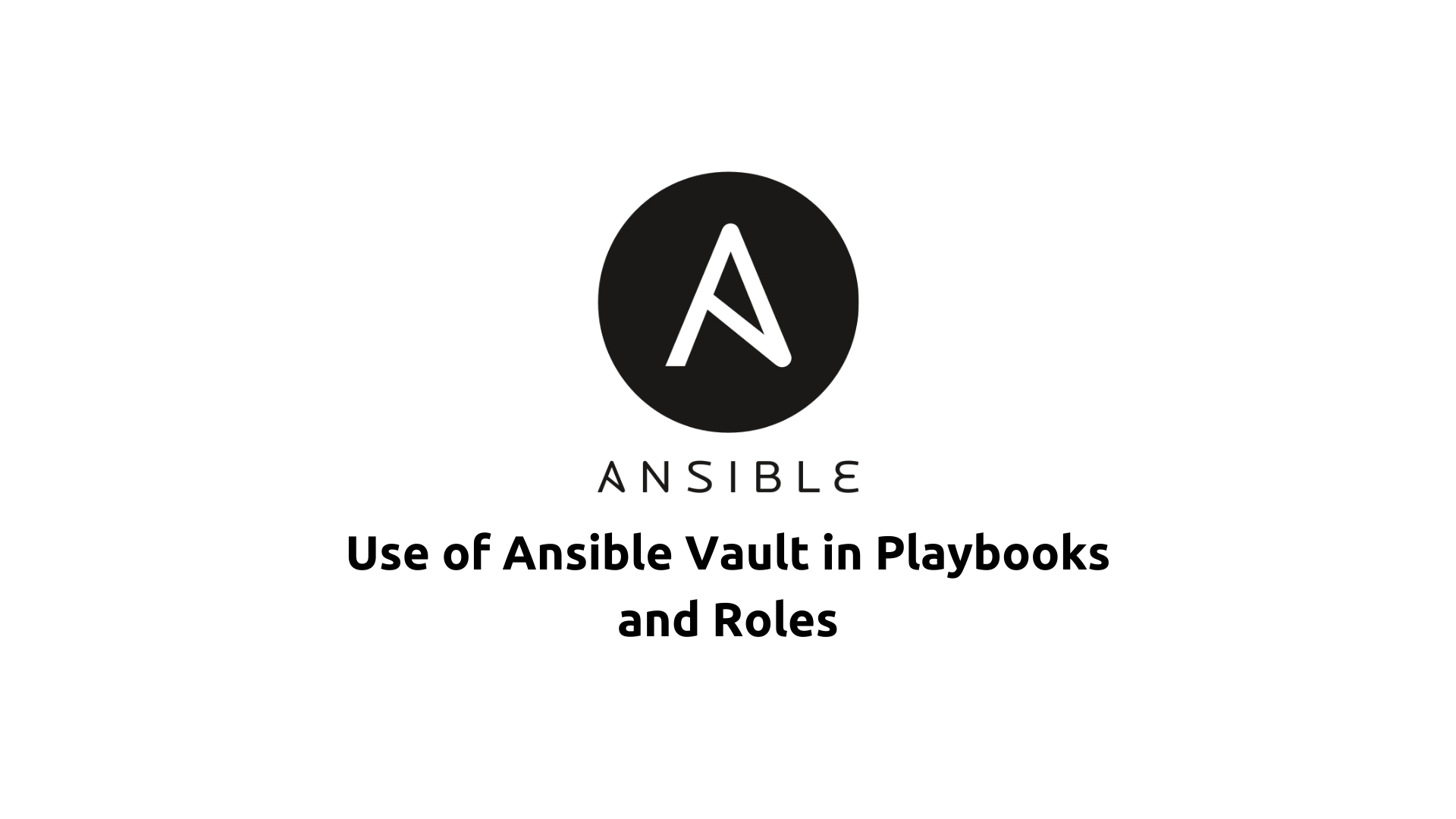Use of Ansible Vault in Playbooks and Roles
 Saurabh Adhau
Saurabh Adhau
Introduction
Ansible Vault seamlessly integrates with Ansible playbooks and roles, allowing users to encrypt and decrypt sensitive data within their automation workflows. By leveraging Ansible Vault in playbooks and roles, organizations can ensure that sensitive information remains secure and protected from unauthorized access or exposure. In this article, we'll explore how to use Ansible Vault in playbooks and roles, along with best practices for managing encrypted data.
Using Ansible Vault in Playbooks
To use Ansible Vault in playbooks, you can encrypt sensitive variables or entire files containing sensitive information. Ansible Vault provides commands and options to encrypt, edit, and decrypt files within playbooks, ensuring that sensitive data remains secure during execution.
Example:
---
- name: Example Playbook with Encrypted Variables
hosts: all
vars:
sensitive_data: !vault |
$ANSIBLE_VAULT;1.2;AES256;your_encrypted_data_here
tasks:
- name: Example Task
debug:
msg: "{{ sensitive_data }}"
In this example, the sensitive_data variable is encrypted using Ansible Vault and can be safely included in the playbook without exposing its contents.
Using Ansible Vault in Roles
Similarly, Ansible Vault can be used within roles to encrypt sensitive variables or files containing sensitive information. Roles encapsulate automation logic and can include encrypted files or variables to securely manage sensitive data across multiple playbooks and projects.
Example:
roles/
└── example_role/
├── defaults/
│ └── main.yml
├── tasks/
│ └── main.yml
└── vars/
└── sensitive_data.yml
In this example, the sensitive_data.yml file within the vars/ directory of the example_role role can be encrypted using Ansible Vault to protect sensitive information.
Best Practices for Using Ansible Vault
Encryption Granularity: Encrypt only the sensitive data that needs protection, rather than encrypting entire files unnecessarily.
Password Management: Use strong, unique passwords for encrypting files with Ansible Vault and securely manage encryption keys.
Role-Based Access Control: Limit access to encrypted files or variables to authorized users or roles within Ansible automation workflows.
Documentation: Document the use of Ansible Vault within playbooks and roles to ensure that encryption and decryption processes are well-documented and understood.
Conclusion
Ansible Vault is a powerful feature that enhances the security of Ansible automation workflows by allowing users to encrypt and decrypt sensitive data within playbooks and roles. By leveraging Ansible Vault effectively and following best practices for managing encrypted data, organizations can ensure that sensitive information remains secure and protected from unauthorized access or exposure.
Subscribe to my newsletter
Read articles from Saurabh Adhau directly inside your inbox. Subscribe to the newsletter, and don't miss out.
Written by

Saurabh Adhau
Saurabh Adhau
As a DevOps Engineer, I thrive in the cloud and command a vast arsenal of tools and technologies: ☁️ AWS and Azure Cloud: Where the sky is the limit, I ensure applications soar. 🔨 DevOps Toolbelt: Git, GitHub, GitLab – I master them all for smooth development workflows. 🧱 Infrastructure as Code: Terraform and Ansible sculpt infrastructure like a masterpiece. 🐳 Containerization: With Docker, I package applications for effortless deployment. 🚀 Orchestration: Kubernetes conducts my application symphonies. 🌐 Web Servers: Nginx and Apache, my trusted gatekeepers of the web.